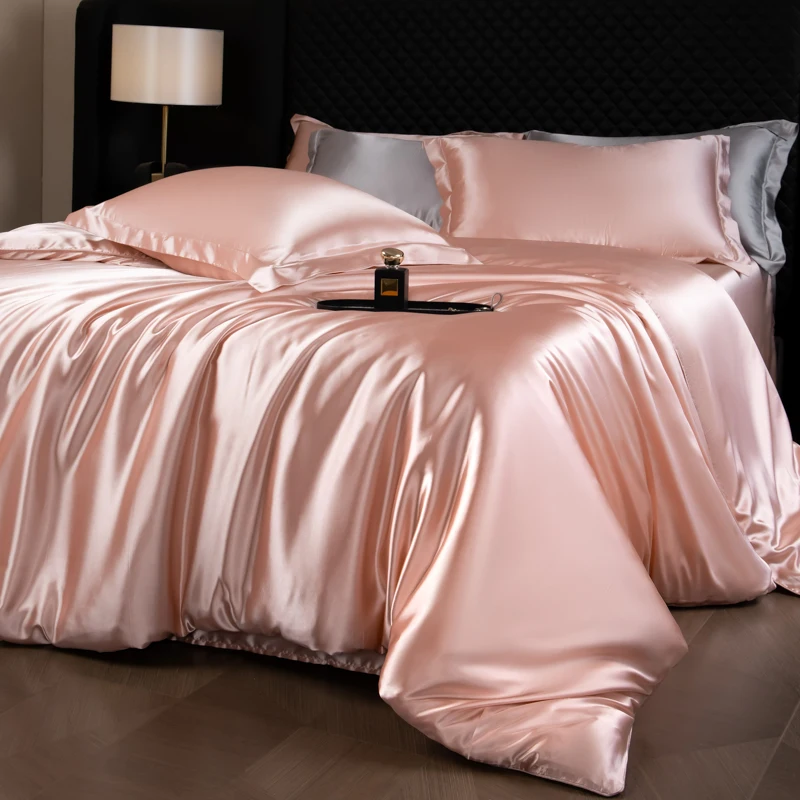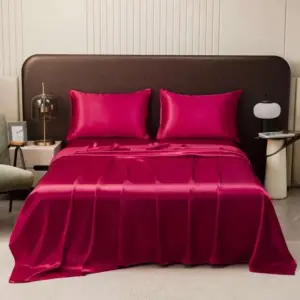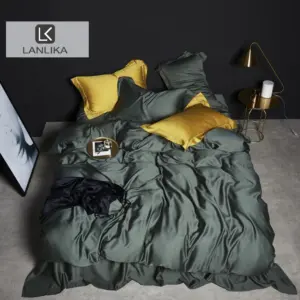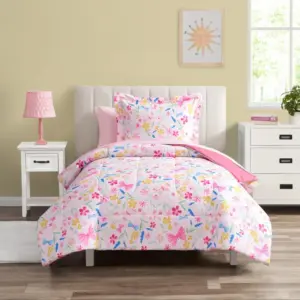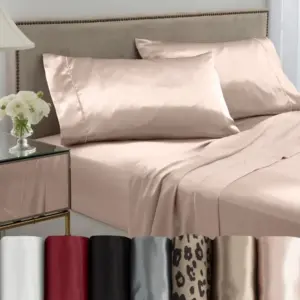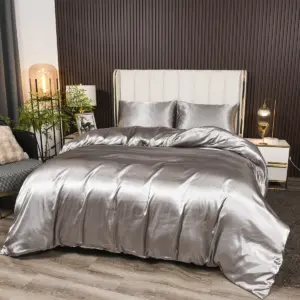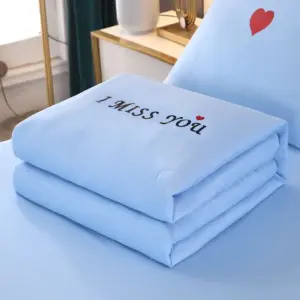Introduction: Understanding the Significance of Silk Weaves
Silk weaving represents an ancient craft that transforms delicate threads into fabrics of extraordinary beauty and function. When silk threads intertwine in different patterns, they create distinctive fabric structures, each with unique properties that affect everything from how the fabric drapes to how it feels against your skin. Far from being merely aesthetic, these weave patterns fundamentally determine the fabric’s texture, durability, flexibility, and practical applications.
The weave you choose matters tremendously, particularly when dealing with premium options like 6A grade Mulberry silk. This highest quality silk fiber, renowned for its long, uniform strands and exceptional smoothness, achieves its full potential only when paired with the appropriate weaving technique. The right combination elevates an already luxurious material to something truly exceptional.
When selecting silk products, particularly for items you’ll use daily like bedding, understanding weave differences becomes essential. Some weaves create cooling, ultra-smooth surfaces ideal for pillowcases, while others provide durability needed for sheets that undergo regular washing. Throughout history, different silk weaves have signified various levels of luxury and specific purposes within royal courts and wealthy households.
Premium bedding brands like Sanctuary Soft recognize this distinction, carefully selecting specific weaves for particular products rather than treating all silk as interchangeable. The silk fabric types used in luxury products reflect intentional choices to enhance both form and function.
As we explore the world of silk weaves, you’ll discover how to identify the perfect match for your specific needs, whether you’re seeking the ultimate in sensory pleasure or practical performance for everyday use. From classic charmeuse to structured twill, each weave offers distinct advantages worth understanding before investing in premium Mulberry silk bedding sets.
The Science of Silk Weaving: Understanding Fundamentals
At its core, silk weaving involves the systematic interlacing of two sets of threads: the warp (vertical threads attached to the loom) and the weft (horizontal threads woven through the warp). The specific pattern of this interlacing creates the distinctive structures we recognize as different weaves.
Basic Weave Structures
All silk fabrics originate from three fundamental weave structures:
Plain Weave
The simplest structure follows a one-over, one-under pattern that creates balanced, strong fabrics. Each weft thread passes alternately over and under each warp thread, creating a tight, even surface. Plain weaves typically offer good durability but less drape than other structures. Examples include Habotai and lightweight Crepe de Chine.
Twill Weave
Characterized by its diagonal pattern, twill weaves create distinctive texture by passing the weft thread over one or more warp threads and then under two or more warp threads, advancing one warp thread on each pass. This structure creates fabrics with notable durability, excellent drape, and a subtle texture that shows color beautifully.
Satin Weave
The most lustrous structure uses “floating yarns” where the weft threads pass over several warp threads before interlacing, creating an exceptionally smooth surface with high sheen. This structure produces fabrics like charmeuse with their characteristic glossy face and matte back.
Understanding Fabric Density
Silk density, measured in momme weight (mm), directly relates to how these weave structures perform. This measurement, representing the weight in pounds of a piece of silk measuring 45 inches by 100 yards, indicates fabric thickness and durability. The optimal momme weight varies by weave type:
- Lightweight fabrics: 6-12 momme
- Medium-weight fabrics: 12-19 momme
- Heavyweight luxury fabrics: 19-25 momme
For luxury bedding, the 19-25 momme range provides the ideal balance between drape and durability. Different weave structures require different optimal momme weights to achieve their characteristic properties. For instance, a satin weave typically requires higher momme weight (19-25) to achieve proper durability while maintaining its luxurious drape.
Understanding these silk weave patterns provides essential context for appreciating why certain weaves excel for particular applications. The interaction between weave structure and thread density creates the foundation for all the characteristics we’ll explore further, from lustrous sheen to flowing drape.
The science of silk weaving explains why seemingly similar silk products can feel dramatically different. When you understand how silk momme weight interacts with weave structure, you gain powerful knowledge for selecting truly exceptional silk products.
Key Characteristics of Silk Fabric Influenced by Weave
The weave structure of silk fabric directly influences its most important properties, creating differences you can see and feel. Understanding these key characteristics helps you select silk that perfectly matches your needs:
Sheen and Luster
How Weave Affects Appearance:
– High Sheen: Satin weaves like charmeuse create highly reflective surfaces with dramatic light play
– Moderate Sheen: Twill weaves offer balanced luster with subtle illumination
– Low Sheen: Crepe weaves produce matte finishes that absorb rather than reflect light
The arrangement of threads determines how light interacts with the fabric surface. Longer “floating” threads in satin weaves create mirror-like reflection, while twisted threads in crepe structures scatter light for a matte effect.
Drape and Movement
How Fabric Flows and Hangs:
– Fluid Drape: Satin weaves flow gracefully, following body contours
– Medium Drape: Twill structures balance movement with substance
– Structured Drape: Tighter weaves like taffeta hold their shape with minimal flow
Drape results from how easily the woven structure allows threads to shift position. Looser structures with longer floats create more movement, while tighter interlacings produce stability.
Texture and Hand Feel
The Tactile Experience:
– Smooth: Satin weaves create glass-like surfaces that feel cool to touch
– Textured: Crepe weaves have slight pebbling for subtle dimension
– Structured: Twill patterns create distinctive diagonal ridges you can feel
Thread arrangement creates texture variations perceptible to fingertips. The ideal silk bedding texture depends on personal preference and intended use.
Weight and Opacity
Substance and Transparency:
– Lightweight/Sheer: Plain weaves can create translucent fabrics like chiffon
– Medium Weight: Crepe structures balance substance with breathability
– Heavyweight: Satin weaves at higher momme counts create substantial fabrics
Thread density combines with weave structure to determine fabric weight and opacity. Tighter weaves generally create more substantial fabrics.
Durability and Care
Longevity Considerations:
– Higher Durability: Balanced plain weaves and twills resist wear
– Medium Durability: Crepe structures offer good everyday performance
– Special Care Required: Satin weaves with long floats may snag more easily
Thread interlacing determines fabric strength, with more frequent interlacings generally creating stronger fabrics that better withstand washing and use.
These characteristics involve inherent trade-offs. For example, the same satin weave that creates luxurious smoothness also requires more careful handling. Understanding these relationships helps you prioritize the features most important for your specific application.
Charmeuse Silk: The Quintessential Luxury Weave
Charmeuse stands as perhaps the most recognizable luxury silk weave, embodying what many people envision when they think of high-end silk. This satin-based structure creates a fabric with two distinctly different sides: an exceptionally smooth, glossy face and a softly matte reverse.
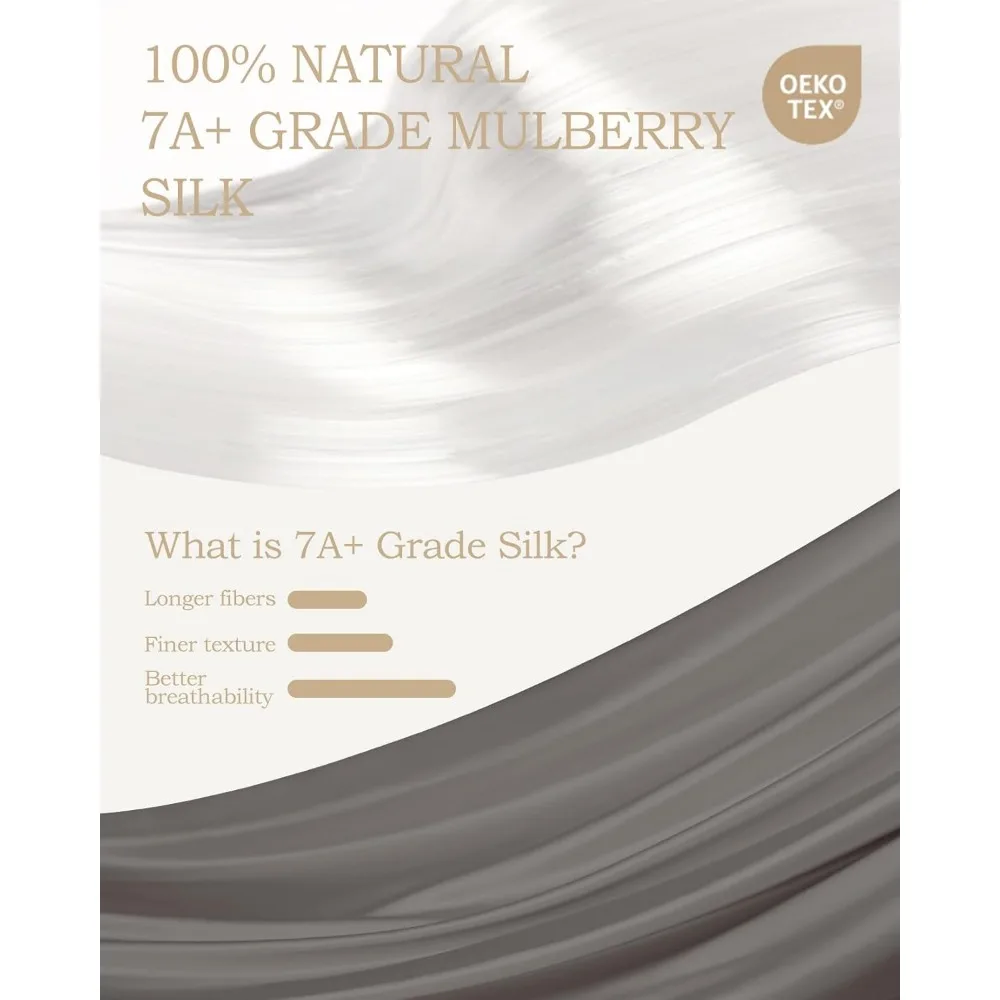
Distinctive Characteristics
Unparalleled Smoothness
Charmeuse achieves its extraordinary smoothness through the satin weaving technique, where weft threads “float” over several warp threads before interlacing. This creates an incredibly even surface with minimal texture interruption, allowing light to reflect uniformly and creating that characteristic silk luminosity.
Exceptional Drape
Few fabrics match charmeuse’s ability to flow and cascade. The fabric moves with remarkable fluidity, gracefully following contours rather than standing away from them. This quality makes charmeuse bedding conform comfortably to the body while maintaining breathability.
Sensory Experience
The touch of charmeuse against skin delivers a distinctively cool, almost liquid sensation. This thermal property—feeling cool initially then warming to body temperature—makes it particularly valuable for 100% silk sheets where comfort is paramount.
Visual Luminosity
Charmeuse displays colors with extraordinary depth and vibrancy. Its smooth surface captures light differently across its planes as it moves, creating subtle shifts in hue and brightness that bring the fabric alive visually.
Optimal Weight Range
For bedding applications, charmeuse performs best in the 19-25 momme range:
– 19-22 momme: Lighter feel with excellent drape, ideal for summer bedding
– 22-25 momme: Substantial luxury with enhanced durability, perfect for year-round use
For garments, lighter 16-19 momme charmeuse provides enough body while maintaining fluid movement.
Best Applications
Charmeuse excels in applications where its sensory qualities can be fully appreciated:
- Luxury Pillowcases: The smooth surface reduces friction against hair and skin
- Premium Sheets: Creates an unmatched sleeping experience with temperature regulation
- Fine Sleepwear: Delivers comfort with beautiful flow and drape
- Evening Wear: Provides sophisticated elegance with light-catching properties
While charmeuse represents the pinnacle of luxury, it does require appropriate care. The same structure that creates its smooth surface makes it more susceptible to snags and requires gentle washing. Proper care techniques help preserve its exceptional qualities for years.
The differences between charmeuse and other silk weaves like Habotai become particularly important when selecting bedding, as these distinctions affect both feel and longevity.
Crepe de Chine: The Versatile Classic
Crepe de Chine represents a masterful balance of luxury and practicality, making it one of the most versatile silk weaves available. Its name derives from the French phrase meaning “crepe from China,” honoring its historical origins.
Distinctive Characteristics
Textured Elegance
Unlike the mirror-smooth surface of charmeuse, Crepe de Chine features a slightly textured “pebbled” surface. This subtle dimension results from using highly twisted threads in alternating directions within a plain weave structure. The result is a fabric with gentle texture that’s visible upon close inspection but feels remarkably smooth against the skin.
Balanced Luster
Crepe de Chine exhibits a matte to semi-lustrous appearance that strikes a perfect balance between casual and formal. Rather than the high shine of satin weaves, it offers a sophisticated glow that’s subdued enough for everyday luxury.
Natural Wrinkle Resistance
The twisted yarns create tension within the fabric structure, giving Crepe de Chine remarkable ability to release wrinkles naturally. This quality makes it particularly valuable for both bedding and garments that need to maintain a polished appearance with minimal maintenance.
Substantial Drape
While flowing beautifully, Crepe de Chine has slightly more body than charmeuse. This gives it enough structure to hang elegantly while still moving with grace—a perfect middle ground between fluid and structured fabrics.
Optimal Weight Range
- For garments: 12-16 momme provides excellent drape with appropriate opacity
- For bedding: 19-22 momme offers durability while maintaining the characteristic feel
Best Applications
Crepe de Chine’s versatility makes it suitable for numerous applications:
- Bedding: Creates comfortable, breathable sheets with excellent durability
- Scarves and Wraps: Offers beautiful drape with enough weight to stay in place
- Blouses and Shirts: Provides elegant movement without being too revealing
- Linings: Feels wonderful against skin while providing structure
The primary advantage of Crepe de Chine is its remarkable balance of properties. While it doesn’t achieve the extreme glossiness of charmeuse or the rugged durability of twill, it performs beautifully across nearly all categories. This makes it an excellent “everyday luxury” option for those who want both performance and elegance.
For those who find charmeuse too delicate or too formal for daily use, Crepe de Chine offers sophisticated elegance with enhanced practicality—truly the versatile classic of silk weaves.
Silk Twill: The Durable Performer
Silk twill combines elegance with exceptional durability, making it the ideal choice when longevity matters as much as luxury. Distinguished by its characteristic diagonal pattern, twill represents traditional craftsmanship with modern functionality.
Distinctive Characteristics
Diagonal Structure
The defining feature of twill is its visible diagonal ribbing, created when weft threads pass over multiple warp threads in a staggered pattern. This structure creates a distinctive texture you can both see and feel, adding visual interest to solid colors and exceptional detail to prints.
Substantial Hand Feel
Twill has a more substantial presence than other silk weaves. It feels reassuringly weighty in hand while maintaining silk’s natural softness. This combination creates a fabric that feels luxurious yet robust.
Color Brilliance
The diagonal structure of twill creates angled surfaces that reflect light differently than plain or satin weaves. This gives twill silk remarkable depth of color, making it particularly effective for rich, complex hues and detailed printing.
Superior Strength
The overlapping thread structure of twill creates inherent strength, making it more resistant to tearing and abrasion than many other silk weaves. This makes twill an excellent choice for items that will see frequent use or washing.
Optimal Weight Range
Twill performs well across a range of weights, typically 16-22 momme:
– 16-19 momme: Lighter weight suitable for scarves and garments
– 19-22 momme: Ideal for durable bedding and home textiles
Best Applications
Silk twill excels in applications requiring both beauty and durability:
- Premium Bedding: Creates long-lasting Mulberry silk sheets with excellent texture
- Scarves and Ties: Shows patterns and prints with exceptional clarity
- Structured Garments: Provides enough body to maintain shape
- Travel Items: Resists wrinkles and recovers well from packing
The primary advantage of twill lies in its combination of visual interest and practical performance. While it may not have the extreme smoothness of charmeuse or the light weight of chiffon, it offers unmatched durability without sacrificing luxury.
For those who value longevity in their silk investments, twill provides an excellent balance of sensory pleasure and practical performance. Its distinctive texture also offers a sophisticated alternative to both highly glossy and completely matte finishes.
Specialty Silk Weaves: Beyond the Basics
Beyond the three primary silk weaves, several specialty structures create fabrics with unique properties for specific applications. Each represents a distinct approach to silk weaving that produces characteristic results.
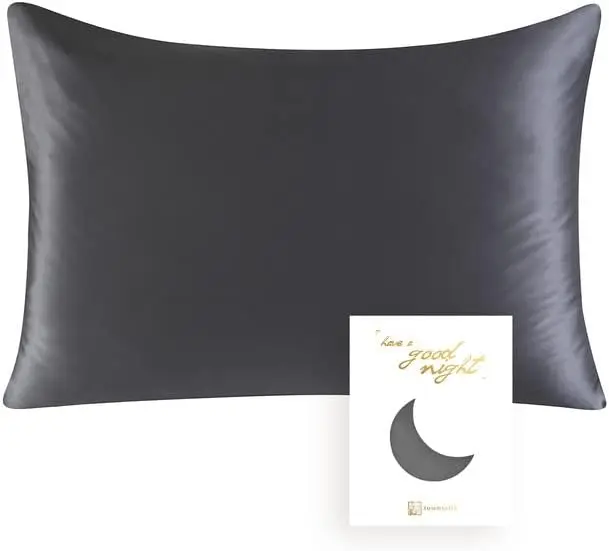
Habotai
Often called “China silk,” Habotai features a balanced plain weave structure that creates a lightweight fabric with a soft hand and subtle luster. Originally developed for lining kimonos, this versatile fabric offers:
- Exceptionally lightweight feel with natural breathability
- Smooth, soft texture that’s gentle against skin
- Moderate sheen that enhances colors without high gloss
- Excellent for linings, scarves, and summer garments
At 8-12 momme, Habotai provides an accessible entry point to silk luxury while remaining practical for everyday use.
Organza
This specialized plain weave creates an incredibly sheer, crisp fabric with surprising strength:
- Remarkable transparency with visible thread structure
- Crisp hand with structural stiffness that creates volume
- Slight sheen that catches light beautifully
- Perfect for overlays, special occasion wear, and decorative applications
Typically lightweight (5-8 momme), organza adds ethereal dimension to whatever it covers.
Dupioni
Distinguished by its characteristic slubs and textural irregularities, Dupioni comes from weaving threads made with double cocoon filaments:
- Highly textured surface with visible slubs and variations
- Medium to high sheen with light-catching properties
- Substantial body that holds shape well
- Excellent for structured garments and decorative items
At 16-19 momme, Dupioni provides textural interest and structural support.
Taffeta
Known for its crisp hand and signature “rustle” when moved, taffeta uses a plain weave with high-tension threads:
- Smooth surface with fine ribbed texture
- Characteristic acoustic “whisper” when touched or moved
- Crisp body that creates structured volume
- Ideal for formal wear and structured decorative pieces
Medium-weight taffeta (16-19 momme) creates architectural shapes with elegant presence.
Georgette
Similar to crepe but with even more pronounced texture and slight transparency:
- Highly textured crepe-like surface
- Matte appearance with minimal sheen
- Flowing drape with slight bounce
- Perfect for flowing garments with movement
Lightweight georgette (12-16 momme) creates ethereal movement with substantial texture.
Understanding these specialty weaves expands your silk vocabulary beyond basic options. For specific projects requiring particular characteristics, these specialized silk weave patterns provide targeted solutions that the more common weaves cannot achieve.
Each specialty weave represents centuries of textile evolution designed to fulfill specific functional and aesthetic requirements. While they may not be as widely used as charmeuse or twill for bedding applications, they demonstrate silk’s remarkable versatility as a luxury fiber.
Comparing Silk Weaves: A Practical Guide
To make informed decisions about silk weaves, it helps to compare their key characteristics side by side. This comparison highlights the strengths and limitations of each structure:
| Weave Type | Sheen/Luster | Drape | Texture | Durability | Best Applications |
|---|---|---|---|---|---|
| Charmeuse | High (glossy) | Flowing, fluid | Very smooth | Moderate | Pillowcases, luxury sheets, evening wear |
| Crepe de Chine | Medium (semi-matte) | Medium with body | Slightly textured | Good | Versatile bedding, blouses, scarves |
| Twill | Medium-high | Structured flow | Distinctive diagonal texture | Excellent | Durable bedding, scarves, structured garments |
| Habotai | Low-medium | Light, flowing | Smooth, soft | Moderate | Linings, scarves, summer garments |
| Organza | Medium (crisp) | Stiff, structural | Very fine, crisp | Surprisingly good | Overlays, special occasion, decorative items |
| Dupioni | Medium-high with variation | Structured | Highly textured with slubs | Very good | Structured garments, decorative items |
| Taffeta | Medium with characteristic sheen | Crisp, structural | Smooth with fine ribs | Good | Formal wear, structured decorative pieces |
| Georgette | Low (matte) | Light with bounce | Highly textured | Moderate | Flowing garments with movement |
Making Practical Decisions
When selecting silk weaves for specific applications, consider these decision factors:
Comfort vs. Appearance
For items that touch your skin, like bedding, balance visual appeal with tactile comfort. While charmeuse offers supreme smoothness, crepe structures might provide better temperature regulation for some sleepers.
Durability vs. Luxury Feel
Higher durability often comes with more structured weaves like twill, which sacrifice some of the extreme smoothness of satin structures. Consider how frequently the item will be used and washed when making this trade-off.
Care Requirements
Different weaves require different maintenance approaches:
– Satin weaves (charmeuse): More susceptible to snagging; requires gentle handling
– Crepe weaves: Naturally wrinkle-resistant; easier everyday care
– Twill weaves: Most durable; stands up to more frequent washing
Application-Specific Considerations
– Bedding: Prioritize comfort against skin, temperature regulation, and durability
– Garments: Focus on appropriate drape, opacity, and movement
– Decorative items: Consider visual impact, structure, and light interaction
This comparative approach helps you prioritize the characteristics most important for your specific needs rather than assuming one weave is universally superior to others.
Selecting the Perfect Silk Weave for Bedding
When choosing silk for bedding, specific considerations become particularly important. The right weave significantly affects sleep quality, comfort, and product longevity.
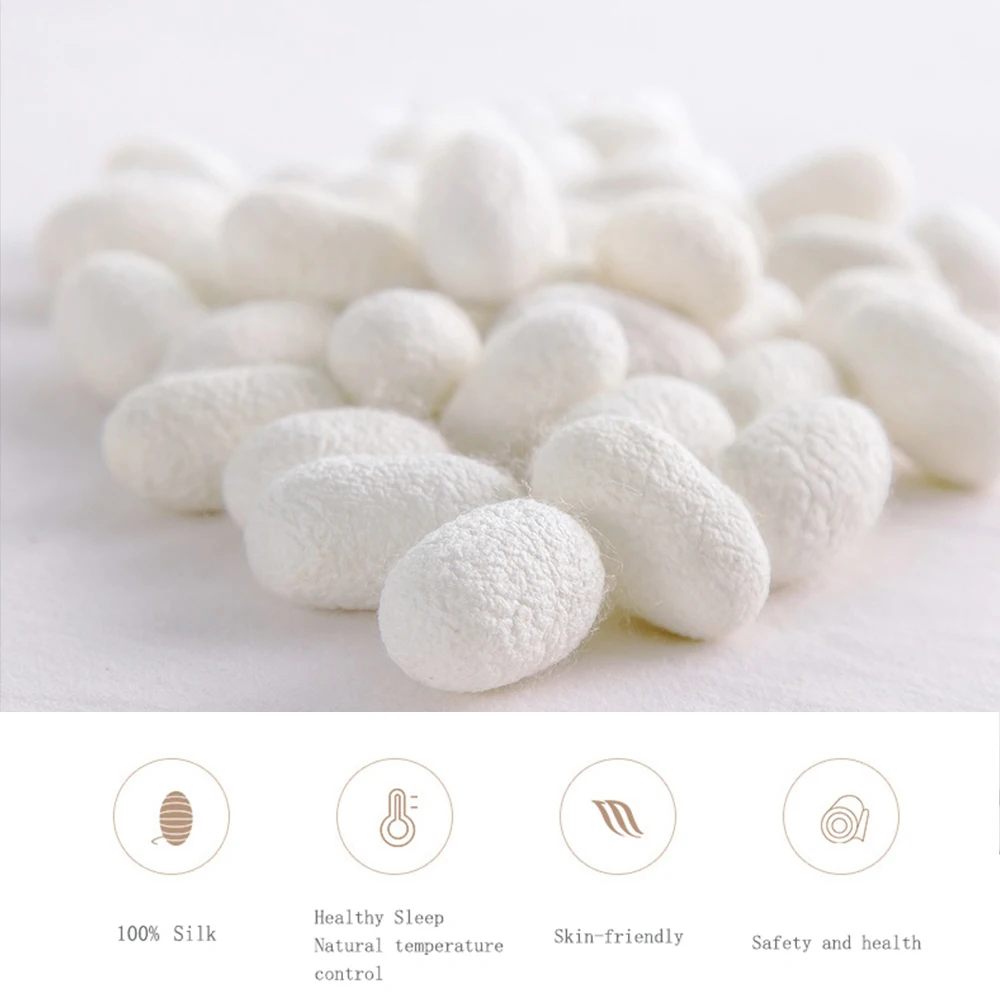
Key Bedding Considerations
Temperature Regulation
Silk naturally regulates temperature, but different weaves enhance this property differently:
– Charmeuse: Creates a noticeably cool surface perfect for hot sleepers
– Crepe de Chine: Offers balanced temperature regulation for year-round comfort
– Twill: Provides slightly more warmth while maintaining breathability
Durability Requirements
Bedding undergoes regular washing and nightly use, making durability crucial:
– Higher momme weights (19-25) provide necessary substance
– Twill structures offer superior longevity
– Tighter weaves generally perform better over time
Maintenance Practicality
Consider how much care you’re willing to provide:
– Charmeuse requires more gentle handling but offers unmatched luxury
– Crepe de Chine balances easy care with elegant performance
– Twill requires minimal special treatment while maintaining quality
Aesthetic Preferences
The visual impact of your bedding affects bedroom ambiance:
– High-sheen weaves like charmeuse create dramatic light play
– Semi-matte finishes like crepe offer subtle sophistication
– Textured weaves add visual interest to solid colors
Specific Recommendations
For Pillowcases
Pillowcases directly contact your face and hair, making comfort paramount:
– Best Option: Charmeuse (22 momme) provides the ultimate smooth surface that reduces friction against hair and facial skin
– Alternative: Crepe de Chine (19-22 momme) offers excellent comfort with slightly better durability
Our collection of silk pillowcases features these premium weaves to maximize both comfort and longevity.
For Sheets
Sheets require a balance of durability and comfort:
– Best Option: Twill (22 momme) provides excellent durability while maintaining luxury feel
– Luxury Option: Charmeuse (22-25 momme) offers unmatched smoothness when maximum comfort is the priority
– Balanced Choice: Crepe de Chine (19-22 momme) offers excellent all-around performance
For Duvet Covers
Duvet covers need structure and durability:
– Best Option: Twill (19-22 momme) provides strength and beautiful drape
– Alternative: Heavier charmeuse (22-25 momme) combines luxury with adequate structure
The best silk weave for bedding ultimately depends on your personal priorities, but these recommendations provide excellent starting points for most sleepers.
High-quality silk bedding represents a significant investment in your sleep quality and comfort. Choosing the optimal weave ensures you’ll enjoy both the immediate sensory pleasure and long-term performance from your ultimate silk bedding collection.
Full-size Silk Sheets, King Size Silk Sheets, Queen Size Silk Sheets, Twin Size Silk Sheets, Washable Silk Sheets
Price range: $95.95 through $178.37 Select options This product has multiple variants. The options may be chosen on the product page100% Silk Sheets, Green Silk Sheets, King Size Silk Bedding Set, Mulberry Silk Bedding Sets, Queen Size Silk Bedding Set
Price range: $1,246.21 through $1,615.22 Select options This product has multiple variants. The options may be chosen on the product pagePink Silk Sheets, Twin Size Silk Sheets
$171.80 Select options This product has multiple variants. The options may be chosen on the product pageFull-size Silk Sheets, Pink Silk Sheets
$136.31 Select options This product has multiple variants. The options may be chosen on the product pageGrey Silk Sheets, Silk Sheet and Pillowcase Set
Price range: $88.20 through $146.64 Select options This product has multiple variants. The options may be chosen on the product pageBamboo Silk Sheets, Cooling Silk Sheets
Price range: $130.76 through $177.80 Select options This product has multiple variants. The options may be chosen on the product page
Silk Weaves for Fashion and Accessories
While bedding represents a major application for silk, different weaves also excel in fashion and accessory applications. The right weave dramatically affects how a garment drapes, moves, and feels against the skin.
Scarves and Accessories
Silk scarves showcase the fiber’s beauty while requiring specific performance characteristics:
Twill (16-19 momme): Creates luxurious scarves with excellent drape and print definition. The diagonal structure displays intricate patterns with remarkable clarity and depth of color.
Charmeuse (16-19 momme): Offers dramatic light play with beautiful fluidity. The high-sheen surface creates striking visual impact while flowing elegantly around the neck or as a head covering.
Crepe de Chine (14-16 momme): Provides excellent everyday scarves with natural wrinkle resistance. The textured surface adds subtle interest while maintaining beautiful drape.
The optimal choice depends on whether you prioritize visual impact (charmeuse), print detail (twill), or everyday wearability (crepe).
Lingerie and Sleepwear
For garments that directly contact skin, comfort becomes paramount:
Charmeuse (16-19 momme): Creates supremely comfortable lingerie and sleepwear with a luxurious feel and elegant drape. The smooth surface feels cool and sensuous against skin.
Habotai (12-16 momme): Offers lightweight comfort with breathable properties ideal for warmer climates. The soft hand and natural temperature regulation make it perfect for sleep garments.
The right choice depends on whether you prioritize maximum smoothness (charmeuse) or lightweight breathability (habotai).
Dresses and Formal Wear
Silk’s natural elegance makes it ideal for special occasion clothing:
Charmeuse (16-19 momme): Creates flowing gowns with dramatic light play and movement. The high sheen adds sophistication while the fluid drape flatters the figure.
Dupioni (16-19 momme): Provides structure and body for more architectural designs. The natural texture adds visual interest while maintaining enough stiffness for structured garments.
Georgette (12-16 momme): Offers flowing movement with textural interest. The matte finish creates subtle sophistication while the bouncy drape adds dynamic movement.
Each weave creates dramatically different garment effects despite using identical fiber content. Understanding these differences allows you to select the perfect silk for your specific fashion application.
Understanding Quality Indicators Beyond Weave
While weave structure significantly impacts silk quality, several other factors interact with weave to determine overall excellence. Understanding these quality indicators helps you make comprehensive evaluations.
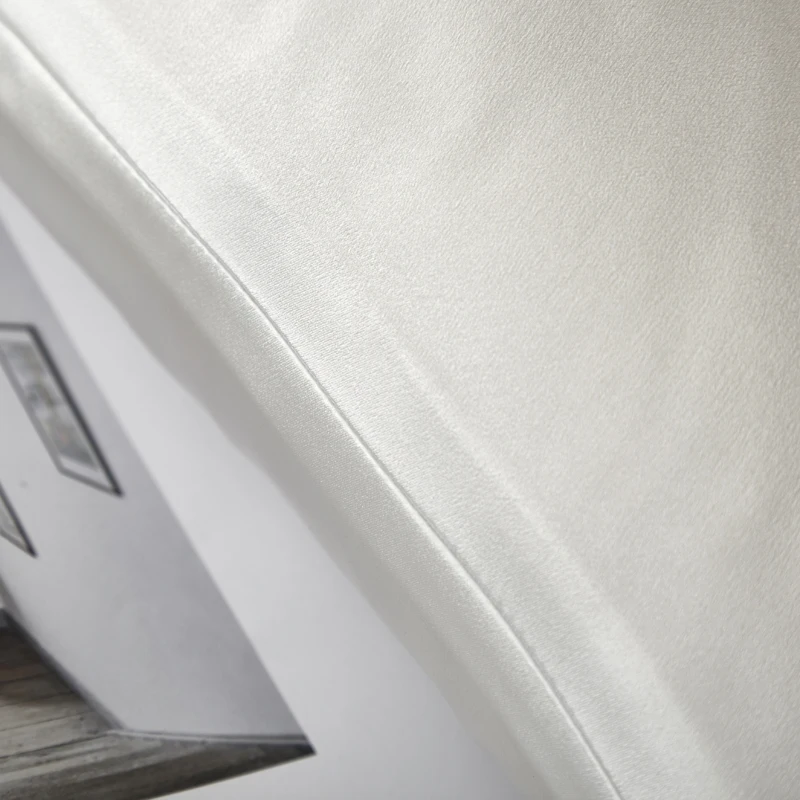
Momme Weight and Its Significance
Momme weight (mm) indicates silk fabric density and directly affects durability, drape, and opacity. Each weave has an optimal momme range:
- Light (6-12 mm): Suitable for scarves, lingerie, and decorative layers
- Medium (12-19 mm): Ideal for garments, linings, and lightweight bedding
- Heavy (19-25 mm): Perfect for premium bedding and substantial garments
Higher momme doesn’t always mean better quality—it must be appropriate for the intended use. Understanding silk momme weight helps you evaluate whether a product has sufficient substance for its purpose.
Silk Grade Classifications
The silk grading system classifies quality based on several factors:
- 6A Grade: The highest classification with perfectly uniform, long fibers and exceptional whiteness
- 5A Grade: Excellent quality with very minor variations
- 4A Grade: Good quality with slight irregularities
- 3A and Below: Increasing levels of irregularity and shorter fibers
Higher grades interact better with sophisticated weaves, particularly those requiring perfect thread uniformity like charmeuse. The best type of silk for bedding combines optimal grade with appropriate weave structure.
Finishing Techniques
After weaving, silk undergoes finishing processes that enhance its natural properties:
- Sand Washing: Creates exceptional softness while reducing high shine
- Calendering: Produces additional smoothness and controlled sheen
- Heat Setting: Stabilizes the weave structure for better performance
These finishing techniques particularly affect how weaves perform in finished products. For example, sand washing makes charmeuse less shiny but exceptionally soft, while calendering enhances its natural glossiness.
Production Standards
Quality silk production maintains strict standards:
- Non-toxic dyes and finishes
- Consistent tension during weaving
- Proper treatment of raw silk before weaving
- Careful inspection for imperfections
These standards ensure that the inherent qualities of each weave structure fully develop in the finished fabric.
When evaluating silk quality, consider how these factors complement each other. Premium silk combines the right grade, appropriate momme weight, suitable weave structure, and proper finishing techniques to create truly exceptional fabric.
Expert Tips for Silk Care by Weave Type
Different silk weaves require specific care approaches to maintain their unique properties. Following these recommendations helps preserve your silk investments for years of enjoyment.
Charmeuse and Satin Weaves
These high-sheen weaves with long floating threads require particularly gentle treatment:
- Washing: Hand wash in cool water with gentle silk-specific detergent, or machine wash using a mesh bag on the delicate cycle
- Drying: Never wring—instead, press between towels to remove excess water, then lay flat or hang to dry away from direct sunlight
- Ironing: Use lowest silk setting with item still slightly damp; press on reverse side when possible
- Storage: Hang on padded hangers or roll (never fold) to avoid permanent crease lines
- Snag Prevention: Remove jewelry before handling; store away from rough surfaces
The long floating threads that create charmeuse’s smooth surface are also more vulnerable to snagging, making gentle handling essential.
Crepe Weaves (Crepe de Chine, Georgette)
Textured crepe weaves have natural wrinkle resistance but benefit from proper care:
- Washing: Hand wash or machine wash on gentle cycle in cool water
- Drying: Gently squeeze out excess water (don’t wring); hang to dry
- Ironing: Usually requires minimal ironing; use low setting if needed
- Storage: Can be carefully folded without severe creasing
- Wrinkle Management: Light steaming effectively removes wrinkles
Crepe weaves generally recover better from wrinkles and are more forgiving in day-to-day care.
Twill and Structured Weaves
These more durable weaves tolerate regular care better than delicate structures:
- Washing: Can withstand gentle machine washing more regularly
- Drying: Hang to dry or lay flat
- Ironing: Use moderate silk setting while fabric is slightly damp
- Storage: Can be carefully folded or hung
- Durability: While more resilient, still requires appropriate silk care products
Even with their greater durability, avoid harsh detergents or bleach with all silk fabrics regardless of weave.
Universal Silk Care Tips
All luxury silk bedding sets benefit from these practices:
- Use pH-balanced detergents specifically formulated for silk
- Avoid direct sunlight during drying to prevent fading
- Treat stains immediately by blotting (never rubbing)
- Store in breathable containers away from direct sunlight
- Address any issues promptly before they worsen
With proper care tailored to specific weave structures, silk products maintain their luxurious properties for many years, making them excellent long-term investments in comfort and quality.
How to Identify Quality Silk Weaves When Shopping
Evaluating silk quality when shopping requires attention to specific indicators that reveal true value beyond marketing claims:
Visual Inspection Techniques
Train your eye to recognize quality silk weaves:
- Even Thread Distribution: High-quality silk shows consistent thread spacing without irregularities
- Color Consistency: Premium silk displays uniform color without blotchiness
- Appropriate Sheen: Quality silk has characteristic luster appropriate to its weave (high for charmeuse, moderate for twill)
- Clean Finishing: Examine hems and edges for straight, even stitching without puckering
For printed silks, check that patterns align properly at seams—a sign of careful cutting and construction using quality fabric.
Touch Assessment Methods
Your hands can reveal much about silk quality:
- Smooth Hand: Quality silk feels smooth without roughness (though texture varies by weave)
- Appropriate Weight: Fabric should have substance appropriate to its intended use and weave type
- Resilience: When crumpled gently, quality silk springs back without severe wrinkling
- Temperature Feel: Real silk feels cool to initial touch, then quickly warms
The “ring test” also helps identify pure silk—when pulled through a ring, high-quality silk passes through completely despite its volume.
Quality Verification Tests
Several simple tests can help verify silk quality:
- Burn Test (for unfinished edges only): Silk burns with little flame, creating ash that crumbles to powder
- Water Test: Place a drop of water on the fabric—it should form a visible bead before slowly absorbing
- Thread Pull: Gently pull a single thread—quality silk threads are strong despite their fineness
Questions to Ask Retailers
When purchasing premium silk products, ask:
– What is the exact momme weight?
– What type of silk is used (Mulberry, Tussar, etc.)?
– What specific weave structure is featured?
– Does the product use 6A grade silk?
– How should the item be cleaned and maintained?
Quality retailers readily provide this information, understanding that educated customers recognize value.
Frequently Asked Questions About Silk Weaves
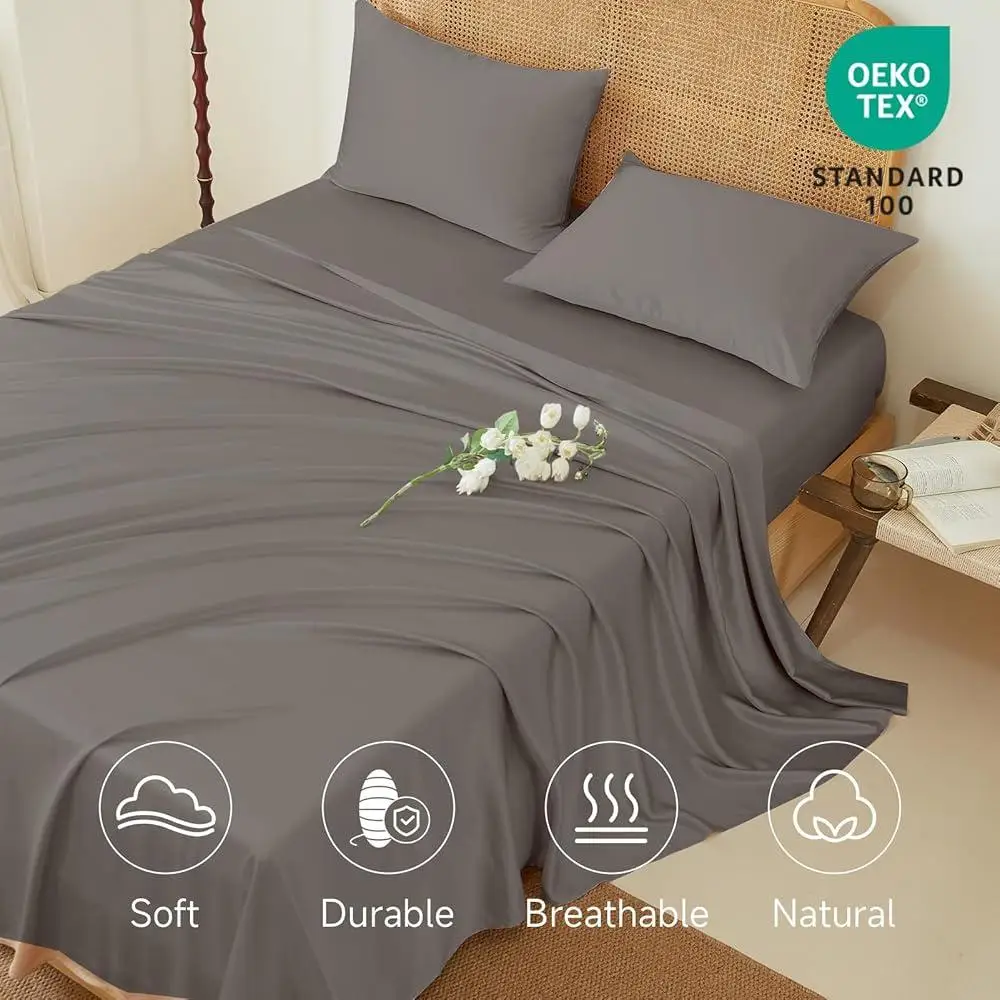
Is charmeuse or crepe better for pillowcases?
Both weaves offer excellent properties for pillowcases, but with different benefits. Charmeuse provides unmatched smoothness that minimizes friction against hair and skin, potentially reducing bedhead and facial creasing. Crepe de Chine offers slightly better durability with excellent comfort and natural wrinkle resistance. For maximum luxury feel, choose charmeuse (22 momme); for slightly better durability while maintaining comfort, select crepe de Chine (19-22 momme). Our silk sheets collection includes both options to suit different preferences.
Does weave affect how silk feels against skin?
Absolutely. Weave structure significantly impacts the tactile experience of silk against skin. Charmeuse creates a cool, smooth surface that glides against skin with minimal friction. Crepe weaves offer a slightly textured feel with excellent breathability. Twill provides a distinctive diagonal texture you can feel subtly against the skin. These differences become particularly important for hot sleepers who may prefer the cooling effect of charmeuse or the breathability of crepe structures.
Which silk weave wrinkles the least?
Crepe weaves like Crepe de Chine offer the best natural wrinkle resistance due to their twisted thread structure, which creates tension that helps the fabric spring back to shape. Twill weaves also perform well regarding wrinkle resistance. Charmeuse, while luxuriously smooth, tends to show wrinkles more readily and may require more careful handling to maintain its pristine appearance.
Are certain weaves more durable than others?
Yes, weave structure significantly impacts durability. Twill weaves typically offer the greatest longevity due to their interlocking diagonal structure. Plain weaves (like Habotai) provide good durability through balanced thread integration. Satin weaves like charmeuse, with their long floating threads, require more careful handling to maintain their quality over time. For items requiring maximum durability, twill generally represents the best choice.
How does weave affect the price of silk products?
Weave complexity directly influences production costs and therefore price. More complex weaves requiring specialized looms or techniques (like jacquard patterns) generally command higher prices. Additionally, certain weaves require higher momme weights to perform properly, increasing material costs. However, price should reflect appropriate weave choice for the intended application rather than simply favoring the most expensive option.
Making Your Final Selection: Balancing Priorities
Choosing the perfect silk weave ultimately requires understanding your specific priorities and how different weaves satisfy them. Rather than seeking a universal “best” option, focus on finding the optimal match for your particular needs.
Prioritizing Your Must-Haves
Begin by identifying your non-negotiable requirements:
- Is sensory luxury your absolute priority? Charmeuse likely represents your best choice.
- Do you need exceptional durability? Consider twill structures.
- Are you seeking balanced performance? Crepe de Chine offers excellent versatility.
- Do specific functional requirements (temperature regulation, wrinkle resistance) top your list? Select weaves that excel in these areas.
Understanding your hierarchy of needs helps narrow options quickly and effectively.
Balancing Competing Factors
Most selections involve trade-offs between desirable characteristics:
- Luxury Feel vs. Durability: Higher luxury often comes with more delicate structures. Determine where your comfort level lies on this spectrum.
- Visual Impact vs. Practical Performance: More dramatic visual effects sometimes require more careful maintenance. Consider your willingness to provide special care.
- Initial Cost vs. Longevity: Higher quality silk generally offers better value over time through extended performance. Balance immediate budget with long-term satisfaction.
The right balance depends entirely on your personal values and practical requirements.
Making Informed Compromises
When perfect solutions aren’t available or exceed budget constraints, understanding weaves helps you make smart compromises:
- If charmeuse exceeds your budget for an entire sheet set, consider charmeuse pillowcases with crepe or twill sheets.
- If you love twill’s durability but want more sheen, look for higher-momme twill with specialized finishing.
- If you desire charmeuse but worry about maintenance, select slightly higher momme weights that offer better durability.
Whatever weave you ultimately select, quality silk represents an excellent investment in both comfort and longevity. The natural properties of silk—temperature regulation, skin friendliness, and breathability—provide benefits regardless of weave structure.
Our silk sheet and pillowcase sets offer premium options across multiple weave types, ensuring you’ll find the perfect match for your specific needs. By understanding the distinctive characteristics of different silk weaves, you’re empowered to make choices that will provide satisfaction for years to come.

